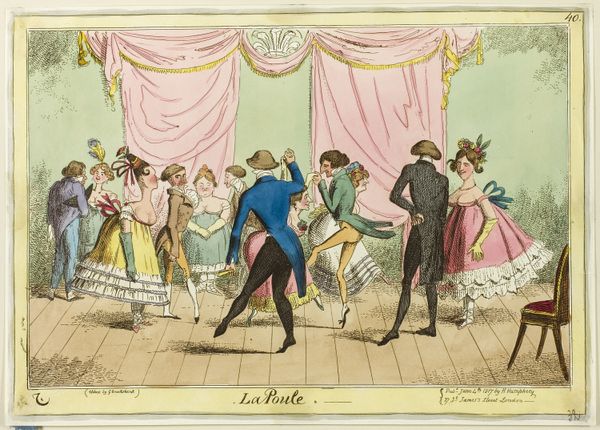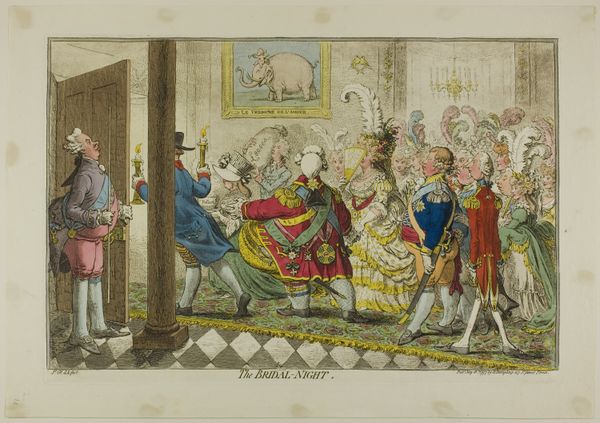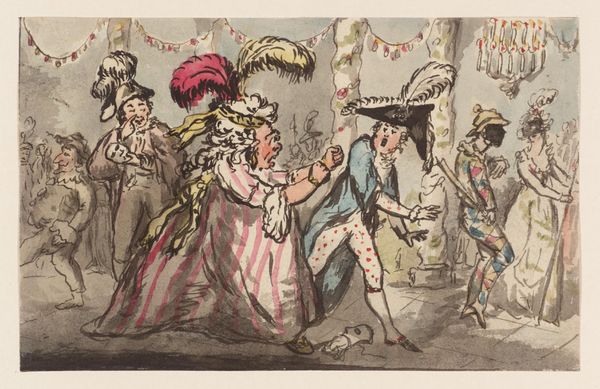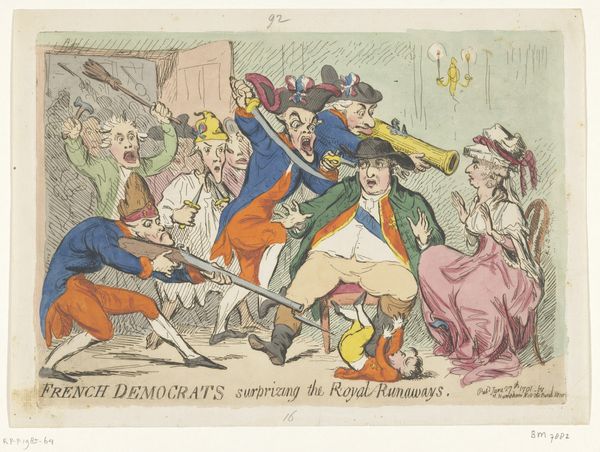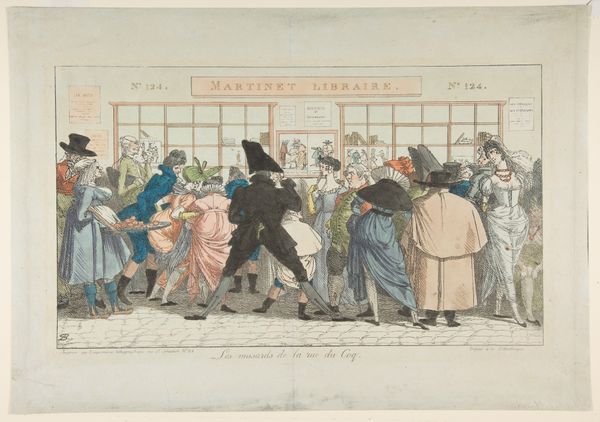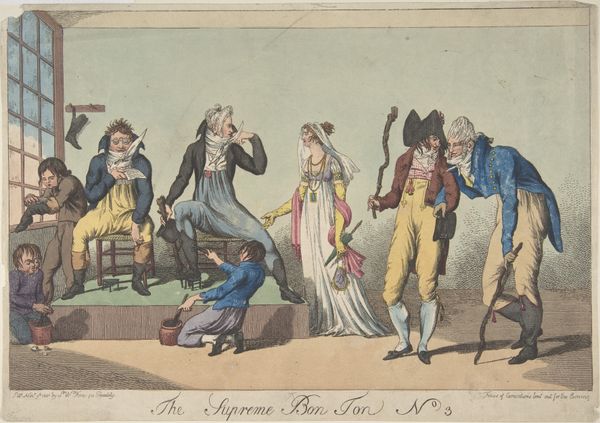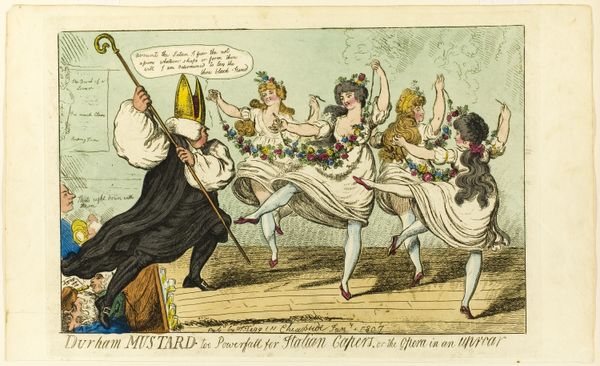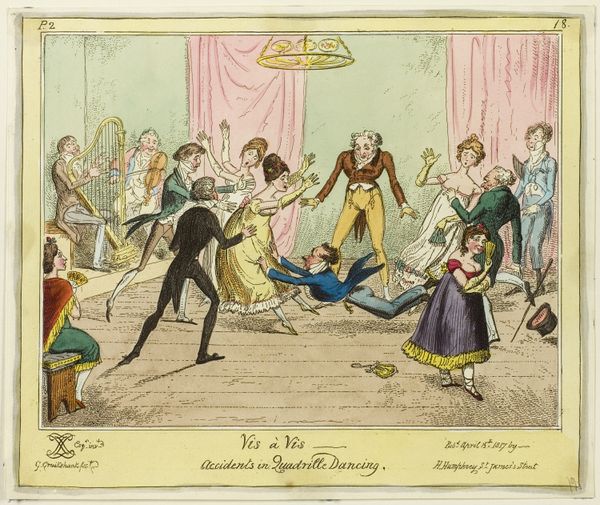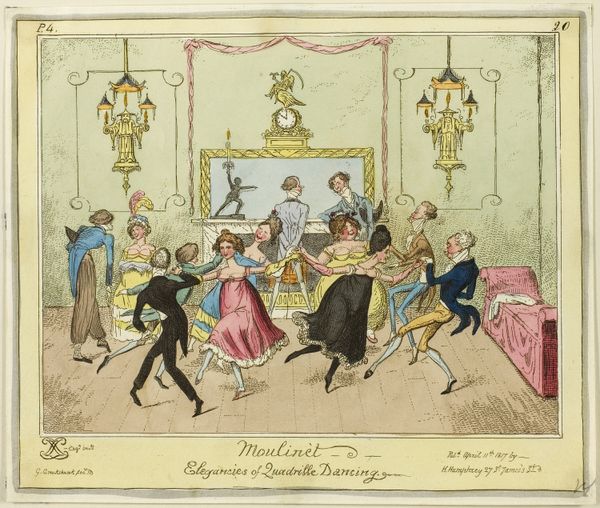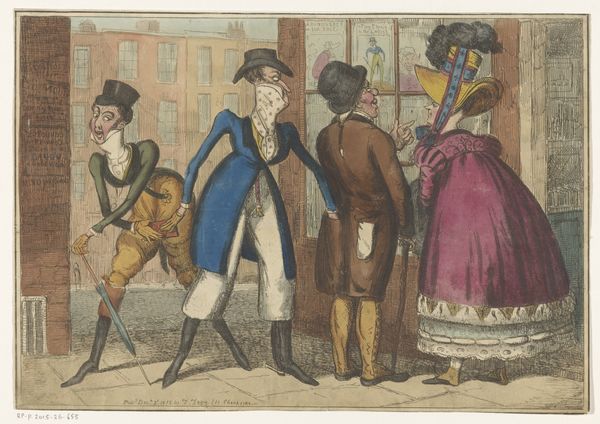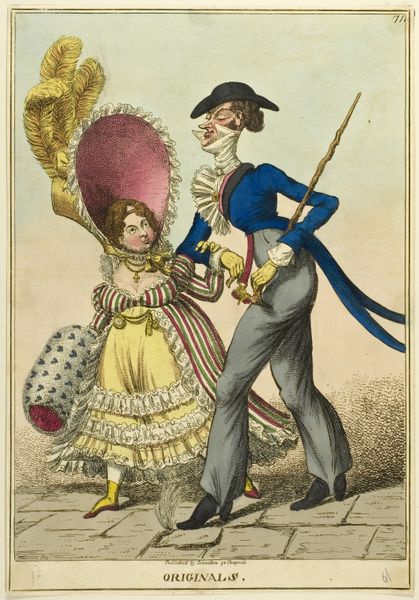
drawing, coloured-pencil, print, etching, paper
#
drawing
#
coloured-pencil
#
water colours
#
allegory
# print
#
etching
#
caricature
#
paper
#
coloured pencil
#
romanticism
#
genre-painting
Dimensions: 247 × 352 mm (image); 257 × 365 mm (sheet cut to platemark)
Copyright: Public Domain
Curator: Ah, here we have "La Poule," an etching with colored pencil, possibly from 1817, by George Cruikshank. It resides here at the Art Institute of Chicago. My first impression? Pure visual chaos. What a swirl of bodies and overstated fashion! Editor: Indeed, chaotic in the best way. Look at the density of line work and the palpable textures he achieves with etching. And it's a social commentary baked into the very process. This speaks volumes about production methods in the early 19th century: mass-produced prints becoming readily available and influencing the burgeoning culture of consumption. Curator: Absolutely. And let's delve into the "why" of it all. "La Poule," the hen, is more than just a dance; it's an allegory of the era's social structures and gender roles. Notice how the women, in their elaborate dresses, are simultaneously adorned and confined? How much material goes into these dresses versus how the men are wearing their jackets! This print isn't just playful, it's an articulation of female constraint in a patriarchal society. Editor: Don't dismiss the importance of paper here. The specific stock influences the ink absorption and the final look. The cheap availability allowed Cruikshank's critiques to be so widely disseminated across different social classes. The commodification of art itself is the quiet engine of change. Look how it depicts excess while existing as another artifact to feed that engine. Curator: And that commodification impacts identity! Through the exaggerated caricatures, we see anxieties around class and gender performance being visualized and disseminated. Are these figures empowered or ridiculed by their representation? The artwork throws us into a dialogue with the cultural obsession with status. Editor: I'm also struck by how much hand labor is represented here in its production. Think of the engraver, painstakingly translating the original image onto the plate. That craft knowledge and artisanal skill contrasts sharply with the fleeting dance captured. Each step in its production is the contribution of many, contrasted against individual decadence. Curator: The material, the image, the moment—all layered with sociopolitical context. A seemingly simple print unfolds to reveal complex questions about who we were, who we are, and who gets to decide. Editor: Precisely. It reminds us that art doesn’t just depict the world. It is another physical entity entering the world and subtly alters it, both through its material form and content.
Comments
No comments
Be the first to comment and join the conversation on the ultimate creative platform.
